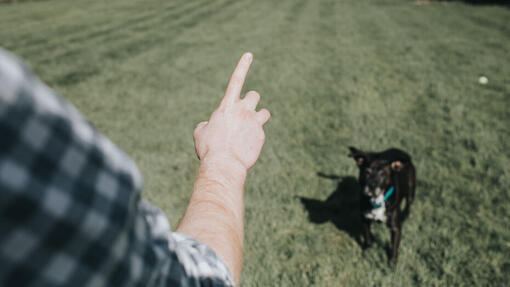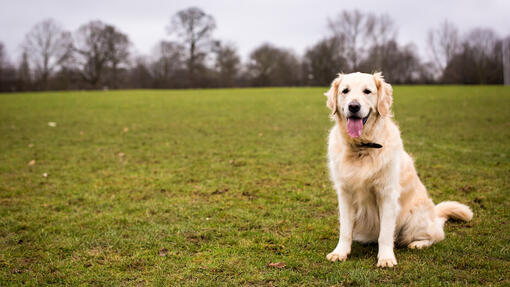Teaching a dog how to sit should be at the top of the list of things to teach your puppy when bringing them home for the first time. After all, they need to know how to behave and when to take a break from all the running and jumping around.
As part of basic obedience training, teaching them this basic command sets the foundation for future trick training and helps them better control their impulses. Are you ready to find out how to teach a dog to sit? Then keep on reading.
What you need
- A quiet room
- Your dog’s favourite treats
- A clicker – optional
- Lots of enthusiasm
How to teach a dog to sit in 6 simple steps
The easiest way to teach your dog this basic trick is by using the ‘lure and reward’ method. This is a really easy and straightforward technique that, if used consistently, can help you achieve the results you want in no time. However, remember to make sure you can first allocate the time and effort necessary for this training and you can also provide the right environment.
Are you ready to start learning how to teach your dog to sit? Good, then you can now follow this step-by-step guide.
1. Get close to your dog and hold a treat near their nose
For the best results, use their favourite treats, but in a small quantity. You don’t want them having too much extra food because this can disrupt their usual diet and cause them to gain weight or have digestive issues.
2. Raise the treat over their head

While they’re sniffing the treat, raise your hand over their head, towards their back. This will make them want to follow the treat and put their rear down.
3. Offer them the treat
As soon as your dog sits down, click your clicker or praise them and let them have the treat.
4. Repeat several times
Practice is key in training your dog to sit. To make them stand up again, walk away or toss a treat in the opposite direction – they will get up again to go for the treat. Follow them and start repeating the same process.
5. Add the verbal cue and a hand signal
Once they get the hang of it, it’s time to add the ‘sit’ command so that they can learn to respond to it. To do this, say ‘sit’, wait a few seconds, and then give them the hand signal. It’s important that your dog is still when you give the verbal cue or else they might end up associating the word with the wrong movement.
6. Phase out the treats
Since they now know how to respond to the command, you can start slowly weaning them off the treats. After a while, they will learn to follow only the verbal and hand signals. It’s also a good idea to continue showing enthusiasm and praising them every time they do a good job.
Things to avoid when training your dog to sit
When training your dog, it’s easy to get carried away and only focus on getting the results you need. However, there are a few rules to follow in order to make sure that you’re providing fun and safe training for your pooch. Below we’ve listed some important points to remember.
Avoid long sessions

Extended training sessions can allow your pooch to get bored or frustrated which is why it’s recommended that you keep the practice sessions to less than 5 minutes each. That’s not to say you can’t do several sessions in the same day, but just keep in mind to watch out for any signs that your dog might be exhausted or disinterested.
Practice in a comfortable and safe place
A quiet and comfortable place is best when practicing how to teach a dog to sit. It’s also a good idea to avoid dog parks or public spaces when you first start the training because dogs usually get very distracted when in the presence of people or other animals. After a few sessions, you can try practicing outside.
Minimise frustration or impatience
It’s easy to get frustrated when your dog doesn’t seem to learn a trick very quickly but try to keep your calm. If you feel like you’re losing your patience, call it a day and postpone the training for another time. There shouldn’t be any pressure put on your dog or yourself because this is meant to be a fun activity for the both of you.
If you want optimal results, it’s key that you follow these steps on how to teach a dog to sit. But above all, remember that training your pup shouldn’t feel like a chore but rather, should be something that helps you strengthen your bond and communicate more easily with your pup.